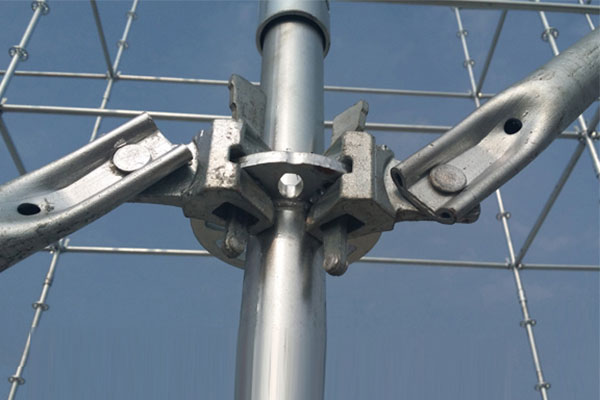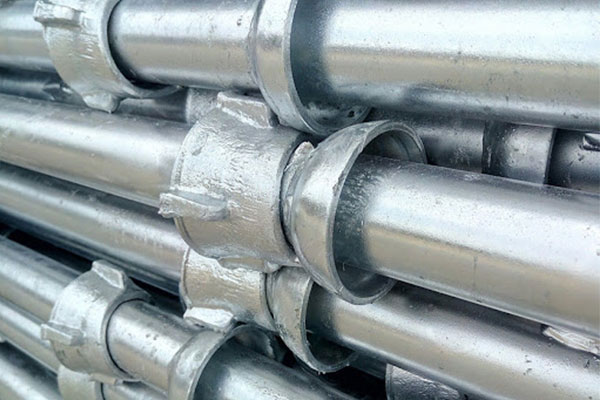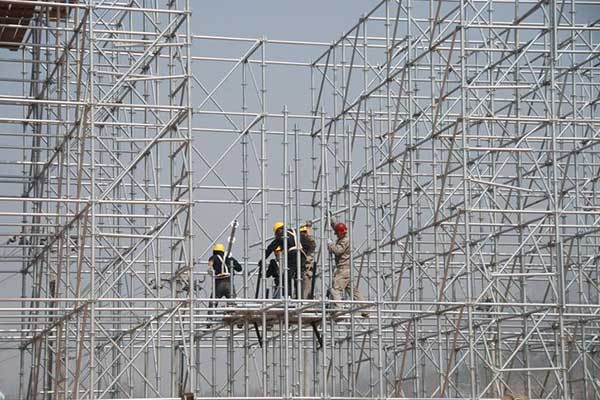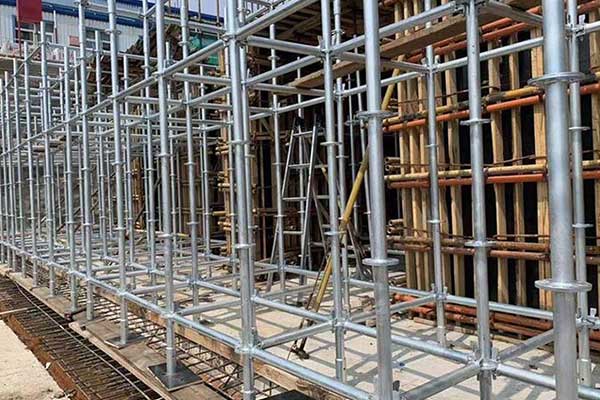Difference Between Ringlock and Cuplock Scaffolding
Scaffolding is essential for construction, renovation, and maintenance projects. Two of the most commonly used scaffolding systems are Ringlock and Cuplock scaffolding. Each system has its own set of features, advantages, and best-use scenarios. In this guide, we’ll explore the differences between Ringlock and Cuplock scaffolding to help you make an informed choice for your construction needs.

What is Ringlock Scaffolding?
Ringlock scaffolding is a modular scaffolding system known for its versatility, strength, and ease of assembly. This system uses a rosette or “ring” with eight connection points, allowing for flexible construction. The horizontal and vertical components are connected using this ring, which enables various angles and structures.
Key Features of Ringlock Scaffolding:
- Modular Design: Ringlock scaffolding is highly adaptable, making it suitable for complex structures, including bridges, buildings, and offshore projects.
- Quick Assembly: Components are easy to assemble without additional tools, reducing labor costs and setup time.
- High Load Capacity: Known for its load-bearing strength, Ringlock scaffolding is ideal for heavy-duty projects.
- Multi-Angle Connections: With up to eight possible connection points on each ring, it provides flexibility in design.

What is Cuplock Scaffolding?
Cuplock scaffolding is a robust, modular system that uses “cups” to connect vertical and horizontal components. Unlike Ringlock, Cuplock scaffolding uses a node point that allows four horizontal bars to be connected at once. This system is straightforward and efficient, making it popular for straight structures like buildings.
Key Features of Cuplock Scaffolding:
- Efficient Locking Mechanism: The Cuplock system uses a top cup and bottom cup to securely lock components, providing stability and reducing the chance of movement.
- Easy to Set Up and Dismantle: With fewer components, Cuplock scaffolding can be assembled quickly, saving time on site.
- Strong and Stable: Cuplock scaffolding is ideal for projects requiring a high degree of stability.
- Minimal Loose Components: This system’s integrated locking method reduces the need for nuts, bolts, or wedges, reducing maintenance and assembly time.

Ringlock vs. Cuplock Scaffolding: Key Differences
| Feature | Ringlock Scaffolding | Cuplock Scaffolding |
|---|---|---|
| Connection Type | Rosette (ring) with multiple connection points | Top and bottom cup system for locking horizontals |
| Flexibility | High; suitable for complex angles | Moderate; best for straight-line structures |
| Assembly Speed | Fast; fewer tools required | Fast; fewer loose parts |
| Applications | Suitable for complex structures (e.g., bridges, plants) | Ideal for straight-line construction (e.g., buildings) |
| Load Capacity | Higher load-bearing capacity | Lower compared to Ringlock |
| Durability | Corrosion-resistant materials often used | Often durable, but may require more maintenance |
| Maintenance | Less maintenance, as components are smaller | Durable but may require periodic checks |

Advantages and Disadvantages of Ringlock and Cuplock Scaffolding
Ringlock Scaffolding
Advantages:
- Versatile and suitable for complex structures.
- High load-bearing capacity.
- Durable and resistant to harsh weather conditions.
Disadvantages:
- Higher initial cost compared to Cuplock.
- May require more training for assembly.
Cuplock Scaffolding
Advantages:
- Quick assembly with minimal components.
- Lower cost, making it suitable for budget-conscious projects.
- Effective for simple, vertical construction needs.
Disadvantages:
- Limited flexibility; not ideal for complex structures.
- Lower load-bearing capacity than Ringlock.

Choosing Between Ringlock and Cuplock Scaffolding
The decision between Ringlock and Cuplock scaffolding depends on the specific requirements of your project. Here are some considerations:
- Project Complexity: For intricate designs, such as industrial structures and bridges, Ringlock scaffolding provides the necessary flexibility and load-bearing capacity.
- Budget: Cuplock is generally more affordable, making it suitable for straightforward construction projects.
- Load Requirements: If your project involves heavy loads, Ringlock scaffolding’s higher load capacity makes it the better choice.
- Speed and Efficiency: Both systems are quick to set up, but Cuplock is slightly more efficient in straight-line construction due to its simpler design.
Conclusion
Understanding the differences between Ringlock and Cuplock scaffolding can help you select the best option for your construction project. Ringlock scaffolding offers greater flexibility and load-bearing strength, making it suitable for complex structures and heavy-duty projects. Cuplock scaffolding, on the other hand, is efficient, cost-effective, and ideal for simpler, vertical structures.
As a professional Ringlock scaffolding supplier and Cuplock scaffolding supplier, we ensure the quality and safety standards of both scaffolding systems, providing qualified scaffolding products for various industries.
